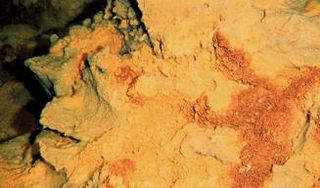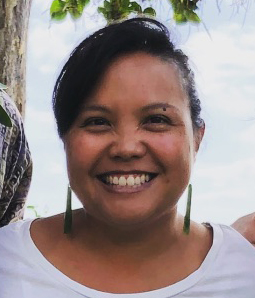Related Research Articles

The University of Hawaiʻi System, formally the University of Hawaiʻi and popularly known as UH, is a public college and university system that confers associate, bachelor's, master's, and doctoral degrees through three universities, seven community colleges, an employment training center, three university centers, four education centers and various other research facilities distributed across six islands throughout the state of Hawaii in the United States. All schools of the University of Hawaiʻi system are accredited by the Western Association of Schools and Colleges. The UH system's main administrative offices are located on the property of the University of Hawaiʻi at Mānoa in Honolulu CDP.

The University of Hawaiʻi at Mānoa is a public land-grant research university in Mānoa, a neighborhood of Honolulu, Hawaii. It is the flagship campus of the University of Hawaiʻi system and houses the main offices of the system. Most of the campus occupies the eastern half of the mouth of Mānoa Valley, with the John A. Burns School of Medicine located adjacent to the Kakaʻako Waterfront Park.

The University of Hawaiʻi at Hilo is a public university in Hilo, Hawaiʻi. It is one of ten general campuses of the University of Hawaiʻi System. It was founded as Hilo Center at Lyman Hall of the Hilo Boys School in 1945 and was a branch campus of the University of Hawaiʻi at Mānoa. In 1970 it was reorganized by an act of the Hawaiʻi State Legislature and became a campus within the newly created University of Hawaiʻi System.

Kamaʻehuakanaloa Seamount is an active submarine volcano about 22 mi (35 km) off the southeast coast of the island of Hawaii. The top of the seamount is about 3,200 ft (975 m) below sea level. This seamount is on the flank of Mauna Loa, the largest shield volcano on Earth. Kamaʻehuakanaloa is the newest volcano in the Hawaiian–Emperor seamount chain, a string of volcanoes that stretches about 3,900 mi (6,200 km) northwest of Kamaʻehuakanaloa. Unlike most active volcanoes in the Pacific Ocean that make up the active plate margins on the Pacific Ring of Fire, Kamaʻehuakanaloa and the other volcanoes of the Hawaiian–Emperor seamount chain are hotspot volcanoes and formed well away from the nearest plate boundary. Volcanoes in the Hawaiian Islands arise from the Hawaii hotspot, and as the youngest volcano in the chain, Kamaʻehuakanaloa is the only Hawaiian volcano in the deep submarine preshield stage of development.

The Monterey Bay Aquarium Research Institute (MBARI) is a private, non-profit oceanographic research center in Moss Landing, California. MBARI was founded in 1987 by David Packard, and is primarily funded by the David and Lucile Packard Foundation. Christopher Scholin serves as the institute's president and chief executive officer, managing a work force of approximately 220 scientists, engineers, and operations and administrative staff.

The Hawaii Undersea Research Laboratory (HURL) is a regional undersea research program within the School of Ocean and Earth Science and Technology (SOEST) at University of Hawaiʻi at Mānoa, in Honolulu. It is considered one of the more important of the independently run undersea research laboratories in the U.S. HURL operated two deep diving submersibles, the Pisces IV and Pisces V and specializes in supporting scientific ocean research and exploration. HURL is actively involved in monitoring deep-sea ecosystems, including coral habitats and fisheries, and conducts maritime archaeology research including documenting World War II wreckage from the Attack on Pearl Harbor in 1941.
C-MORE: SUPER HI-CAT
The Hawaii Ocean Time-series (HOT) program is a long-term oceanographic study based at the University of Hawaii at Manoa. In 2015, the American Society for Microbiology designated the HOT Program's field site Station ALOHA a "Milestone in Microbiology", for playing "a key role in defining the discipline of microbial oceanography and educating the public about the vital role of marine microbes in global ecosystems."

The North Atlantic garbage patch is a garbage patch of man-made marine debris found floating within the North Atlantic Gyre, originally documented in 1972. A 22-year research study conducted by the Sea Education Association estimates the patch to be hundreds of kilometers across, with a density of more than 200,000 pieces of debris per square kilometer. The garbage originates from human-created waste traveling from rivers into the ocean and mainly consists of microplastics. The garbage patch is a large risk to wildlife through plastic consumption and entanglement. There have only been a few awareness and clean-up efforts for the North Atlantic garbage patch, such as The Garbage Patch State at UNESCO and The Ocean Cleanup, as most of the research and cleanup efforts have been focused on the Great Pacific garbage patch, a similar garbage patch in the north Pacific.

Edward Francis DeLong, is a marine microbiologist and professor in the Department of Oceanography at the University of Hawaii, Manoa, and is considered a pioneer in the field of metagenomics. He is best known for his discovery of the bacterial use of the rhodopsin protein in converting sunlight to biochemical energy in marine microbial communities.

Anita L. Lopez is a former officer of the National Oceanic and Atmospheric Administration Commissioned Officer Corps. She last served as the deputy director of the NOAA Commissioned Officer Corps and deputy director for Operations of NOAA's Office of Marine and Aviation Operations. She previously served as the commanding officer of NOAA's Marine Operations Center–Atlantic in Norfolk, Virginia from June 2012 to January 2014. Lopez retired form the NOAA Corps on March 1, 2018. Since 2018, she has been serving as the Director of Research Vessel Operations at the University of Hawaii and the Interim Director of Diversity Equity and Inclusion at the School of Ocean and Earth Science and Technology (SOEST).
Katrina Jane Edwards was a pioneering geomicrobiologist known for her studies of organisms living below the ocean floor, specifically exploring the interactions between the microbes and their geological surroundings, and how global processes were influenced by these interactions. She spearheaded the Center for Dark Energy Biosphere Investigation (C-DEBI) project at the University of Southern California, which is ongoing. Edwards also helped organize the deep biosphere research community by heading the Fe-Oxidizing Microbial Observatory Project on Loihi Seamount, and serving on several program steering committees involving ocean drilling. Edwards taught at the Woods Hole Oceanographic Institution (WHOI) and later became a professor at the University of Southern California.[1][2]
Susana Agustí Requena is a Spanish biological oceanographer who has participated in over 25 oceanographic expeditions in the Arctic, Southern Ocean (Antarctic), Atlantic, Pacific and Indian Oceans. She played a key role in the Malaspina Circumnavigation Expedition. She is professor in Marine Science at King Abdullah University of Science and Technology in Saudi Arabia and an adjunct Professor at the University of Tromsø (Norway).
Lorenz Magaard was a German-American mathematician and oceanographer. He made essential contributions to the theory of ocean waves and earned particular credit for organizing education and research.

Rosanna "Rosie" ʻAnolani Alegado is a Kanaka ʻōiwi/Native Hawaiian Associate Professor of Oceanography at the Daniel K. Inouye Center for Microbial Oceanography as well as director of the Hawai‘i Sea Grant’s Ulana 'Ike Center of Excellence at the University of Hawaiʻi at Mānoa. Alegado studies the evolution of host–microbe interactions and the microbial ecology of coastal estuarine systems.
David Michael Karl is an American microbial biologist and oceanographer. He is the Victor and Peggy Brandstrom Pavel Professor of Microbial Oceanography at the University of Hawaiʻi at Mānoa and the Director of the University Center for Microbial Oceanography: Research and Education.
Angelicque E. White is an American oceanographer. She is an associate professor at the University of Hawaiʻi at Mānoa School of Ocean and Earth Science and Technology and director of the Hawaii Ocean Time-series (HOT) program.
Elizabeth Kujawinski is an American oceanographer who is Senior Scientist at the Woods Hole Oceanographic Institution, where she works as Program Director of the Center for Chemical Currencies of a Microbial Planet. Her research considers analytical chemistry, chemical oceanography, microbiology and microbial ecology. She is interested in what controls the composition of organic materials in aquatic systems.
Margo Helen Edwards is a marine geologist known for mapping of the seafloor and hydrothermal vents. She led the 1999 SCICEX and was the first women to live aboard a United States' Navy submarine while doing under-ice research.
Richard W. Murray, a geologist and oceanographer, is the Deputy Director and Vice President for Research at Woods Hole Oceanographic Institution (WHOI) in Woods Hole, Massachusetts. Murray was previously a professor of earth and environment at Boston University (1992-2019), where he served as Chair of the Department of Earth Sciences (2000-2005), and Director of Boston University's Marine Program (2006-2009).
References
- ↑ NSF: Science and Technology Centers Program
- ↑ Kettlewell, Julianna."Ocean census discovers new fish", BBC, October 23, 2003
- ↑ Stephens, Tim."UCSC collaborates in interdisciplinary center to study marine microbes", UC Santa Cruz Currents online, August 14, 2006
- ↑ "NSF: Science and Technology Centers Program". Archived from the original on 2016-03-04. Retrieved 2018-04-06.
- ↑ AP."Hawaii gets $19 million for oceanography center", Boston.com, August 3, 2006
- ↑ http://cmore.soest.hawaii.edu/education/undergraduates/scholars_program.htm C-MORE: Undergraduate Internships
- ↑ "MBARI scientist leads cruise to study how changing ocean conditions affect marine algae" Archived June 30, 2009, at the Wayback Machine , MBARI News Briefs 2008, July 31, 2008